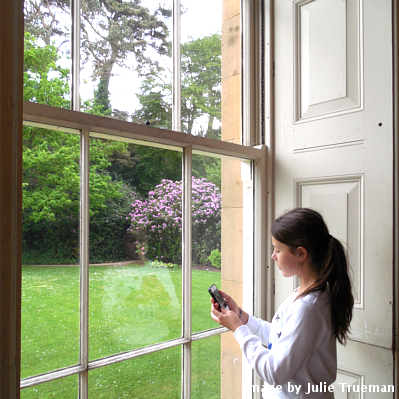The Wild Man Game - bringing historic places to life
Posted on 9 September 2014
The Wild Man Game - bringing historic places to life
 By Gavin Wood and Simon Bowen, Digital Interaction Group, Newcastle University.
By Gavin Wood and Simon Bowen, Digital Interaction Group, Newcastle University.
This article is part of our series: a day in the software life, in which we ask researchers from all disciplines to discuss the tools that make their research possible.
Heritage organisations, such as museums, and managers of historic sites are increasingly interested in using mobile phones as a way of adding value to visits and directly connecting with the general public. App designers have responded by creating gamified digital experiences by borrowing game mechanics and game elements in an attempt to engage the user.
However, these experiences often fall short and we are given uninteresting treasure hunts that are often more about achieving goals and collecting rewards rather than thinking about and connecting with the heritage space itself. In response, we are exploring how digital play can bring our cherished cultural spaces to life, challenging the typical role for mobile phone apps in such contexts.
The Wild Man Game project is a collaboration between Newcastle University and English Heritage. Our design work is centred on Belsay Hall, a 19th century country mansion located in the North East of the UK. Using interactive 3D technology, powered by a cross-platform games engine, we have created five mixed reality games that attempt to challenge the way families connect with our heritage spaces, all inspired by the mythical Wildman of Belsay. Our creative digital experience might ask visitors to creep from one room to another, mimic wild animals, dance wildly, or encourage them to stand still as it reveals a projection of nature, or even demand they roar loudly as they take a selfie.
This project is part of a wider investigation that is using the lens of play to inform how we design digital experiences that connect the physical with the digital. We are particularly interested in how playful, as opposed to gameful experiences can help marry these two worlds together.
Gamefulness consists of formal play which is bound by rules and has defined winners and losers. In contrast, playfulness and our focus on design is typified by activities that involve improvisation, expressiveness, spontaneity, and fantasy. Our aspiration in exploring play is our belief that it will encourage app designers to create and explore a more open design space with a more varied palette of interactive possibilities than those offered by more familiar gameful strategies.
As well as creating rich meaningful experiences, our playful design made interesting demands of our software tools. To begin with, we needed a robust solution to 3D graphics which we achieved through an OpenGL game renderer. We used the Collada file format for our models with a production pipeline supported by the FCollada SDK. This enabled us to use existing assets from virtually any 3D model archive, and FFTS (available on GitHub) allowed us to process our audio captured through the OpenAL audio library.
However, to create contextually rich mobile experiences we needed to use new pervasive hardware and sensors. To this end, we are experimenting with Estimote beacons. These are wireless sensors that can be attached to an object or space. Although Esimotes come with their own library, they can be picked up by both Android and iOS devices as a standard Bluetooth Low Energy (BLE) beacon which means we can avoid any proprietary software.
To evaluate our game we observed several families playing the game in-situ. We then conducted semi-structured interviews with each family to discuss their individual experiences of the game. We are now analysing this qualitative data using a combination of interaction analysis and thematic analysis. We have also collected quantitative usage data using the Google Analytics library.
We plan to return to the site with additional families to verify and refine understanding that has arisen from our initial analysis. We are particularly charmed by the fact our digital experience bridges the physical space of Belsay Hall with our new digital content. For example, early analysis of our creep game shows that players are challenging the rules of what is socially acceptable behaviour in heritage spaces as they explore Belsay Hall in all manner of unexpected ways.
